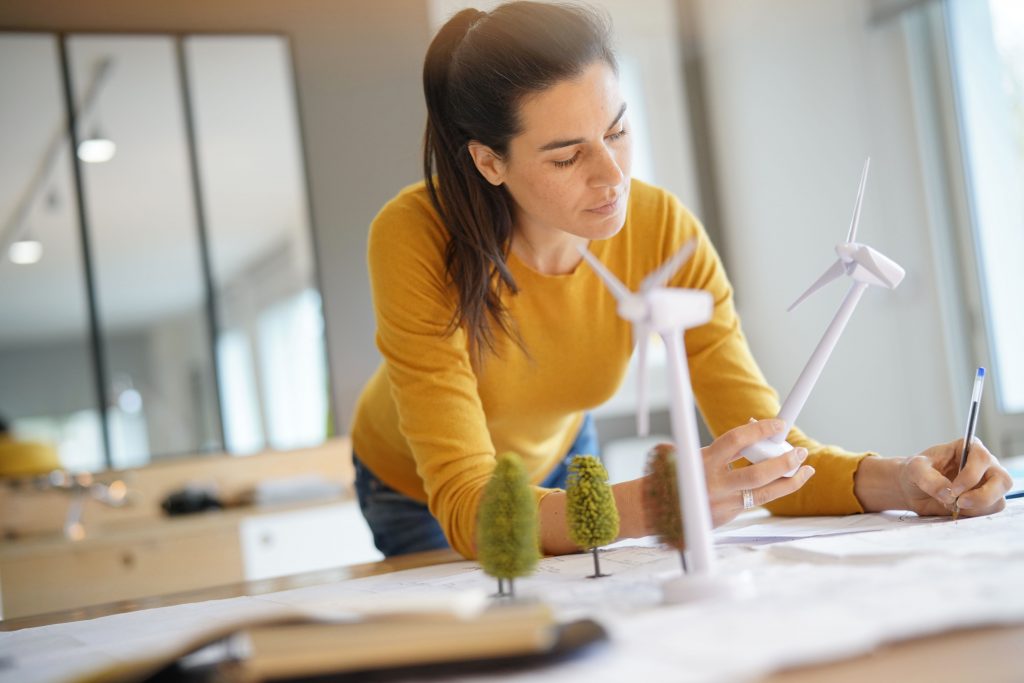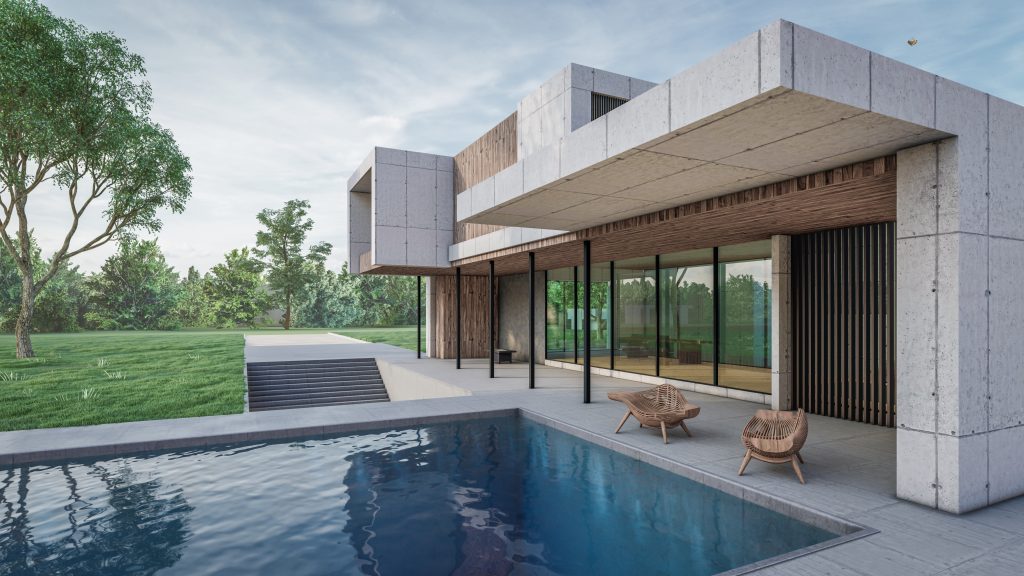We live in them, work in them, run our errands, and spend our leisure time in them — buildings. Have you ever been in a building that felt good to be in? Where the space just felt right? Our built environment has the potential to positively or negatively impact our health and well-being. When you know a building was created sustainably, you feel good about the environmental impact, and often, physically feel good in the building.
According to the definition on USGBC, “Green building is the practice of designing, constructing and operating buildings to maximize occupant health and productivity, use fewer resources, better conserve finite resources, reduce waste and negative environmental impacts, and decrease life cycle costs.”
Environmental jargon?
Of course, like every industry, buzzwords can take over good intentions and make useful phrases seem meaningless. These days it’s very common to see a business describe their product as “sustainable,” “green,” and “environmentally friendly,” making these terms misused and misunderstood.
Take the term “environmentally friendly.” As this article from Architect Magazine explains, “The popularity of this phrase is mammoth: It gets more than 70 million hits on Google, 25 million more than apple pie. But the term makes little sense. The Cambridge Dictionary defines it as, ‘not harmful to the environment.’ But all industrial production and certainly all building construction has an environmental impact, some of which can be harmful.
Truly designing for sustainability means going beyond a basic checklist of jargon to meet guidelines or simply purchasing “eco-friendly” products. Increasingly, global citizens realize that true sustainability is really about the terms and conditions of human survival and what state we want our planet to exist in.
Design should improve our life
Fiscal, social, and environmental responsibility all go together in serving the environmental needs of people. Our built environment, and the management thereof, has an extensive direct and indirect impact on our surroundings, community, and economy. Sustainable design works to balance the various issues in each of these areas by using a unified approach to create smart design solutions where the builder, inhabitant, and environment win.
“Everyone knows that sustainability is a three-pointed triangle: people, profit and planet,” said Lois Vitt Sale, Senior Vice President and Chief Sustainability Officer at Wight & Co., a Chicago-based integrated design and delivery firm. The three P’s of sustainability (People, Profit, and Planet), are also sometimes referred to as the three E’s of sustainability (Environmental, Economic, and Ethical), allowing for a complete solution to complex problems.
Sustainable design should lower the reduction of important resources such as energy, water, land, and natural resources. In addition, it needs to impede environmental degradation caused by buildings and their inner workings throughout the existence of the structure. It goes without saying that sustainable design should also create an ambiance that is livable, healthy, safe, enjoyable, and gratifying. The labor used to construct and operate the building and the workforce who develop the products used in the building should also be treated ethically. While doing all this, the construction teams, building owners, and manufacturers of products should be able to earn fair prices for their labor and products. When a building does all of this it is truly sustainable.
According to the Whole Building Design Guide (WBDG), a program of the National Institute of Building Sciences, “Building owners, designers, and builders each face unique challenges to meet demands for new and renovated facilities that are accessible, secure, healthy, and productive, while minimizing any negative impacts upon society, the environment, and the economy.”

Life cycle costing
Buildings that are good for people can also be good for the planet. A holistic understanding of a building’s life cycle can create a built environment that is simultaneously welcoming for those in it while minimizing a negative environmental impact. This is possible by implementing sustainable design practices at each stage of the building’s production and life cycle.
The things to keep in mind are not just the cost of the building itself, but the total cost of ownership, which includes upkeep and maintenance for the lifetime of the building. It’s like buying an electric car. The initial cost may be higher, but upkeep and operating costs are lower over time, and the environmental impact is significantly less than petrol alternatives. Always consider the continuous operations and maintenance, parts replacement, removal cost or salvage value, and the realistic life of the system of the component you’re considering. That’s the whole life cost.
In the article Building Design Shifts Toward Wellness Architecture, Samantha McCormack of TPG Architecture states, “We are seeing increased demand from clients across the board in reducing their carbon footprints both with respect to existing and new spaces…”
“That can be done in a couple of ways, from more efficient HVAC systems to purchasing carbon offsets. We are also seeing requests from clients that want to reduce the overall amount of real estate they have, which requires that space be used more efficiently — ensuring every room or zone is multifunctional and activated throughout the day,” she added.
Implementing sustainable design practices into your construction life cycle is a win-win-win. You can reduce your overall operating and maintenance costs, carbon footprint, and maximize productivity, simply by setting and adjusting the life cycle cost to optimize the benefits of the building.
Remember the basics of sustainable design
Sustainable building design is constantly evolving, but there are basics that never change. The National Institute of Building Sciences has identified six fundamental principles that should always be considered when optimizing.
- Site potential: Successful projects begin with proper site selection, whether retrofitting an existing structure or constructing a new building. The footprint of the building and space must integrate with the environment seamlessly to be considered sustainable design. So many details affect the surrounding community such as: location, orientation, and landscaping of a building. These factors can influence the local ecosystems, transportation choices, and how energy is used.
- Energy use: Solar panels and battery walls significantly decrease energy use. Improving the electricity consumption in our built environment is crucial to energy independence. Aiming for net-zero energy buildings will greatly reduce our fossil fuel-derived energy habit.
- Protecting and conserving water: Reduce, reuse, and recycle water for on-site use whenever possible.
- Building space and materials used: Population growth doesn’t have to equate to the depletion of natural resources. If we create our buildings, and the things in them, with sustainability in mind, we can create a circular economy and reduce our waste.
- Indoor Environmental Quality (IEQ): Breathing fresh air and having maximum daylight always feels better. Data shows that the IEQ of a building affects the inhabitants’ health, happiness, and productivity. Do you like hearing your neighbors? Neither do they. Designing for optimized acoustic performance can help that. And if you’ve ever read a furniture review where the person complained about the smell of the item after unpacking? It’s all about avoiding the use of materials with high-VOC emissions.
- Operational and maintenance practices: Strict processes make for good habits. Designers can require specific equipment and procedures that simplify and reduce maintenance needs. For example, a greywater system reuses water, different faucets, and toilets require less water. Different lighting uses less energy. Natural cleaning materials don’t have toxic chemicals. All of these things are small changes to be more cost-effective and reduce life cycle costs.
Fortunately, global leaders in design, architecture, construction, and engineering are responding to the climate change crisis and resource shortages by focusing on sustainable design in construction.


